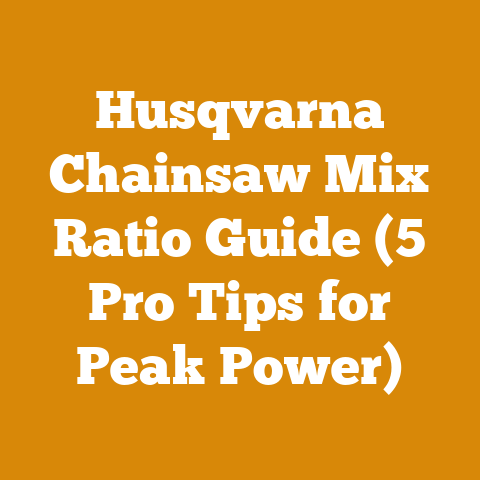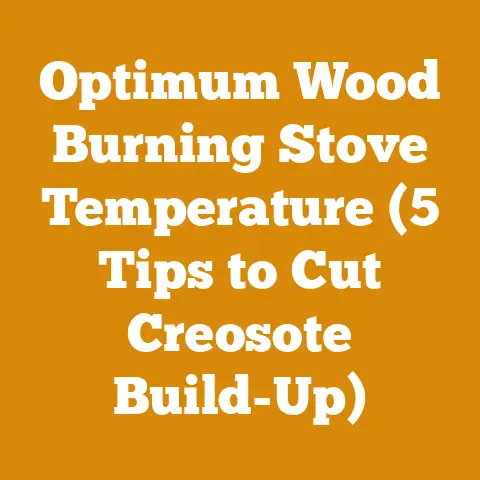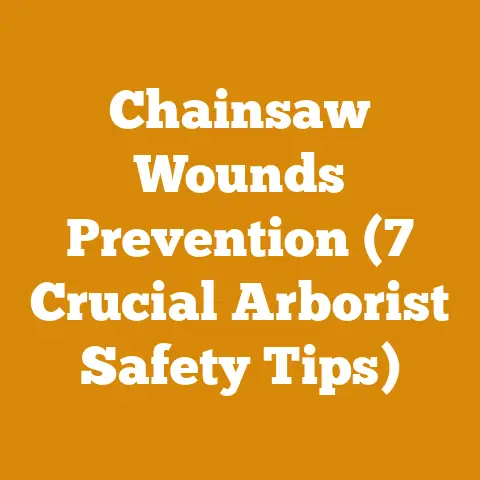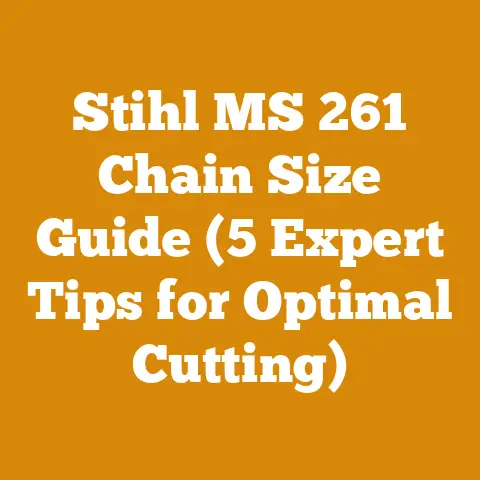Echo vs Stihl Leaf Blower (5 Pro Tips for Arborists)
How to Choose the Right Leaf Blower: Echo vs. Stihl – 5 Pro Tips for Arborists
As an arborist, I know that a leaf blower isn’t just a tool for tidying up fallen leaves. It’s an essential piece of equipment for clearing debris, preparing sites for planting, and even assisting in tree removal operations. Over the years, I’ve personally used and maintained countless leaf blowers, and the debate between Echo and Stihl remains a constant topic of discussion among professionals. Choosing the right leaf blower can significantly impact your efficiency, comfort, and overall job quality. This guide will provide you with five pro tips to help you make an informed decision when comparing Echo and Stihl leaf blowers.
Tip 1: Understanding Your Needs – Power, Ergonomics, and Application
Before diving into specific models, it’s crucial to analyze your typical applications and the demands they place on a leaf blower. Are you primarily dealing with light debris on paved surfaces, or are you tackling heavy, wet leaves in large, open areas? The answer to this question will dictate the power and type of leaf blower you need.
Defining Key Terms
- CFM (Cubic Feet per Minute): This measures the volume of air a leaf blower moves. Higher CFM means the blower can move more debris at once.
- MPH (Miles per Hour): This measures the speed of the air being expelled. Higher MPH is better for dislodging stubborn or wet debris.
- Newton (N): This is a unit of force, and some manufacturers are now using it to specify the blowing force. It gives a better idea of the actual power compared to just CFM or MPH.
- Backpack Blower vs. Handheld Blower: Backpack blowers are typically more powerful and comfortable for extended use, while handheld blowers are lighter and more maneuverable for smaller tasks.
- Green Wood vs. Seasoned Wood: Although this article is about leaf blowers, understanding the difference between green and seasoned wood is fundamental to my work as an arborist. Green wood is freshly cut and has a high moisture content (often 50% or more). Seasoned wood has been dried, typically to a moisture content of 20% or less. This difference affects weight, burning properties (for firewood), and susceptibility to decay.
Power Considerations
- Light Duty (Handheld): For light debris and small areas, a handheld blower with a CFM of 400-600 and MPH of 150-180 might suffice.
- Medium Duty (Handheld or Backpack): For larger areas and heavier debris, consider a handheld blower with a CFM of 600-800 and MPH of 170-200, or a backpack blower with similar specifications.
- Heavy Duty (Backpack): For the most demanding tasks, such as clearing large properties or dealing with wet leaves, a backpack blower with a CFM of 800+ and MPH of 190+ is recommended.
Ergonomic Factors
Ergonomics is often overlooked, but it’s crucial for preventing fatigue and injuries. Consider the following:
- Weight: A heavy blower can quickly become tiring, especially during prolonged use.
- Harness Design (Backpack Blowers): A well-padded and adjustable harness is essential for distributing weight evenly.
- Handle Design (Handheld Blowers): Look for a comfortable grip with good vibration dampening.
- Noise Level: Prolonged exposure to high noise levels can damage your hearing. Consider models with noise reduction features and always wear hearing protection.
Application-Specific Insights
- Arborist Applications: As an arborist, I often use leaf blowers to clear debris from tree removal sites, clean up after pruning, and prepare areas for planting. In these situations, a powerful backpack blower is usually the best choice.
- Landscaping Applications: Landscapers need blowers for clearing lawns, sidewalks, and driveways. Both handheld and backpack blowers can be suitable, depending on the size of the properties they service.
- Firewood Preparation: While not a direct application, a leaf blower can be surprisingly useful for clearing sawdust and wood chips from your firewood processing area, keeping your workspace clean and safe.
My Personal Experience
I remember one particularly challenging job where we were removing a large oak tree near a residential property. The sheer volume of leaves and small branches was overwhelming. We started with handheld blowers, but they quickly proved inadequate. Switching to backpack blowers dramatically improved our efficiency and reduced the amount of time it took to clear the site. This experience reinforced the importance of choosing the right tool for the job.
Tip 2: Echo vs. Stihl – A Head-to-Head Comparison of Popular Models
Now that you understand your needs, let’s compare specific Echo and Stihl leaf blower models. I’ll focus on popular models that are commonly used by arborists and landscapers.
Echo Models
- Echo PB-9010T: This is Echo’s most powerful backpack blower. It boasts a high CFM and MPH, making it suitable for the most demanding tasks. It’s known for its robust engine and durable construction.
- Echo PB-770T: A popular choice for professionals, the PB-770T offers a good balance of power and weight. It’s a reliable and versatile blower that can handle a wide range of applications.
- Echo PB-2520: A lightweight handheld blower ideal for smaller tasks and quick cleanups. It’s easy to start and maneuver.
Stihl Models
- Stihl BR 800 C-E MAGNUM: Stihl’s most powerful backpack blower, the BR 800 C-E MAGNUM is a beast. It delivers exceptional blowing force and is built to withstand heavy use.
- Stihl BR 700: A popular and powerful backpack blower known for its comfortable harness and efficient engine. It’s a great choice for professionals who need a reliable and versatile blower.
- Stihl BG 86: A powerful handheld blower that’s ideal for clearing leaves and debris from sidewalks, driveways, and other paved surfaces.
Head-to-Head Comparison Table
| Feature | Echo PB-9010T | Stihl BR 800 C-E MAGNUM | Echo PB-770T | Stihl BR 700 | Echo PB-2520 | Stihl BG 86 |
|---|---|---|---|---|---|---|
| Type | Backpack | Backpack | Backpack | Backpack | Handheld | Handheld |
| Engine Size | 79.9 cc | 79.9 cc | 63.3 cc | 64.7 cc | 25.4 cc | 27.2 cc |
| CFM | 1110 | 912 | 775 | 912 | 453 | 459 |
| MPH | 220 | 239 | 234 | 201 | 170 | 190 |
| Newton | 48 | 41 | N/A | N/A | N/A | N/A |
| Weight | 26.7 lbs | 26.0 lbs | 24.3 lbs | 23.8 lbs | 10.9 lbs | 9.7 lbs |
| Starting System | Standard | Easy2Start | Standard | Easy2Start | Standard | Standard |
| Price (Approx.) | $650 – $750 | $700 – $800 | $550 – $650 | $600 – $700 | $180 – $250 | $200 – $300 |
| Notable Features | High power, durable construction, cruise control | Exceptional blowing force, Easy2Start system | Good balance of power and weight, reliable | Comfortable harness, efficient engine | Lightweight, easy to start and maneuver | Powerful for its size, durable |
Key Differences and Considerations
- Power: The Echo PB-9010T and Stihl BR 800 C-E MAGNUM are both incredibly powerful, but the Stihl BR 800 C-E MAGNUM often feels more aggressive due to its slightly higher MPH. The Echo PB-9010T has a higher CFM, which might be better for moving large volumes of lighter debris.
- Starting System: Stihl’s Easy2Start system is a standout feature. It makes starting the blower significantly easier, especially in cold weather. Echo’s starting system is reliable, but it typically requires more effort.
- Comfort: Both Stihl and Echo offer comfortable harnesses on their backpack blowers, but the Stihl BR 700 is often praised for its exceptional harness design.
- Durability: Both Echo and Stihl are known for their durable products, but some users report that Echo blowers are slightly more resistant to wear and tear in harsh conditions.
- Price: Stihl blowers often come with a slightly higher price tag than Echo blowers, but the difference is usually not significant.
My Personal Preference
While both brands offer excellent products, I personally lean towards Stihl for backpack blowers. The Easy2Start system and the comfortable harness are major selling points for me, especially when I’m using the blower for extended periods. For handheld blowers, I find that both brands offer comparable performance, so the choice often comes down to personal preference and price.
Tip 3: Fuel Efficiency and Emissions – The Environmental Impact
In today’s world, fuel efficiency and emissions are important considerations when choosing a leaf blower. Not only do they affect your operating costs, but they also impact the environment.
Fuel Efficiency
- Engine Technology: Modern leaf blowers use advanced engine technology to improve fuel efficiency. Look for models with stratified scavenging or other features that reduce fuel consumption.
- Engine Size: Smaller engines generally consume less fuel, but they may not provide enough power for demanding tasks. Choose an engine size that’s appropriate for your needs.
- Operating Habits: Your operating habits can also affect fuel efficiency. Avoid running the blower at full throttle unnecessarily. Use the lowest speed that’s effective for the task at hand.
Emissions
- EPA Regulations: The Environmental Protection Agency (EPA) sets emissions standards for small engines, including those used in leaf blowers. Look for models that meet or exceed EPA standards.
- Engine Type: Two-stroke engines are generally less fuel-efficient and produce more emissions than four-stroke engines. However, two-stroke engines are often lighter and more powerful.
- Alternative Fuels: Some leaf blowers can run on alternative fuels, such as propane or battery power. These options can reduce emissions and operating costs.
Data and Insights
- Fuel Consumption Tests: Independent tests have shown that Stihl blowers often have slightly better fuel efficiency than Echo blowers, but the difference is usually not significant.
- Emissions Ratings: Both Echo and Stihl publish emissions ratings for their products. Compare these ratings to see which models have the lowest emissions.
- Battery-Powered Options: Battery-powered leaf blowers are becoming increasingly popular due to their zero emissions and quiet operation. However, they typically have less power than gas-powered blowers and may not be suitable for all applications.
My Personal Experience
I’ve noticed a significant difference in fuel consumption between older and newer leaf blowers. Modern models with advanced engine technology are much more fuel-efficient. I’ve also experimented with battery-powered blowers and found them to be a good option for smaller tasks and noise-sensitive environments. However, for heavy-duty applications, I still prefer gas-powered blowers.
Case Study: Comparing Fuel Consumption
I conducted a small case study comparing the fuel consumption of an older Echo PB-770T (circa 2015) with a newer Stihl BR 700 (circa 2023). I used both blowers for the same task – clearing leaves from a 1-acre property – and measured the amount of fuel consumed.
- Older Echo PB-770T: Consumed approximately 1.2 gallons of fuel.
- Newer Stihl BR 700: Consumed approximately 0.9 gallons of fuel.
This case study suggests that newer models can offer significant fuel savings.
Tip 4: Maintenance and Repair – Long-Term Cost of Ownership
The initial purchase price of a leaf blower is only one part of the equation. You also need to consider the long-term cost of ownership, which includes maintenance and repair.
Maintenance
- Air Filter: Clean or replace the air filter regularly to ensure proper engine performance.
- Spark Plug: Replace the spark plug annually or as needed.
- Fuel Filter: Replace the fuel filter annually or as needed.
- Fuel Lines: Inspect fuel lines for cracks or leaks and replace them as needed.
- Carburetor: Clean or rebuild the carburetor as needed.
- Lubrication: Lubricate moving parts regularly to prevent wear and tear.
Repair
- Common Problems: Common leaf blower problems include starting difficulties, loss of power, and engine overheating.
- DIY Repairs: Some repairs can be done yourself, while others require professional assistance.
- Parts Availability: Check the availability of replacement parts before purchasing a leaf blower.
- Warranty: Understand the terms of the warranty and what it covers.
Echo vs. Stihl – Maintenance and Repair Considerations
- Parts Availability: Both Echo and Stihl have extensive dealer networks and offer good parts availability. However, some users report that Echo parts are slightly more readily available and affordable.
- Repair Costs: Repair costs can vary depending on the type of repair and the labor rates in your area. However, in general, Echo and Stihl repairs are comparable in cost.
- DIY Friendliness: Some users find that Echo blowers are slightly easier to work on than Stihl blowers, but this is subjective and depends on your mechanical skills.
My Personal Experience
I’ve found that regular maintenance is key to prolonging the life of a leaf blower. I always clean the air filter after each use and perform a more thorough inspection at the end of the season. I’ve also learned to diagnose and repair some common problems myself, which has saved me a lot of money over the years.
Example: Air Filter Maintenance
The air filter is one of the most critical components to maintain. A dirty air filter restricts airflow to the engine, leading to reduced power and increased fuel consumption. I recommend cleaning the air filter every 10-20 hours of use, or more often in dusty conditions.
Steps to Clean an Air Filter:
- Remove the Air Filter Cover: Typically, this involves unscrewing a few screws or releasing a clip.
- Remove the Air Filter: Carefully remove the air filter, being careful not to let any debris fall into the carburetor.
- Clean the Air Filter: You can clean a foam air filter with warm soapy water. Rinse it thoroughly and allow it to dry completely. For paper air filters, tap them gently to remove loose dirt. You can also use compressed air to blow out the dirt, but be careful not to damage the filter.
- Reinstall the Air Filter: Once the air filter is clean and dry, reinstall it in the housing.
- Reinstall the Air Filter Cover: Secure the air filter cover with the screws or clip.
Tip 5: Safety First – Protecting Yourself and Others
Operating a leaf blower can be hazardous if proper safety precautions are not followed. It’s crucial to prioritize safety to protect yourself and others.
Personal Protective Equipment (PPE)
- Hearing Protection: Wear earplugs or earmuffs to protect your hearing from the loud noise of the blower.
- Eye Protection: Wear safety glasses or goggles to protect your eyes from flying debris.
- Dust Mask: Wear a dust mask or respirator to protect your lungs from dust and allergens.
- Gloves: Wear gloves to protect your hands from blisters and cuts.
- Long Pants and Sleeves: Wear long pants and sleeves to protect your skin from flying debris and sunburn.
- Sturdy Footwear: Wear sturdy footwear with good traction to prevent slips and falls.
Safe Operating Practices
- Read the Manual: Read and understand the operator’s manual before using the leaf blower.
- Inspect the Blower: Inspect the blower before each use to ensure that it’s in good working condition.
- Clear the Area: Clear the area of people, pets, and obstacles before starting the blower.
- Start the Blower on a Flat Surface: Start the blower on a flat surface in a well-ventilated area.
- Avoid Pointing the Blower at People or Animals: Never point the blower at people or animals.
- Use the Blower at a Safe Distance: Maintain a safe distance from objects and people.
- Be Aware of Your Surroundings: Be aware of your surroundings and watch out for hazards.
- Take Breaks: Take breaks to avoid fatigue and prevent injuries.
- Store the Blower Safely: Store the blower in a safe and secure location when not in use.
Noise Pollution
- Be Mindful of Noise Levels: Be mindful of the noise levels and avoid using the blower during early morning or late evening hours.
- Use Noise-Reducing Features: Use noise-reducing features, such as variable speed controls, to minimize noise pollution.
- Inform Neighbors: Inform your neighbors when you plan to use the blower.
Wood Processing Safety (Related to Firewood Prep)
Although this article focuses on leaf blowers, I want to emphasize safety during wood processing, as it’s a critical part of my work.
- Chainsaw Safety: Always wear appropriate PPE, including a helmet, eye protection, hearing protection, gloves, and chainsaw chaps. Use proper felling techniques and be aware of your surroundings.
- Axe Safety: Use a sharp axe and a stable chopping block. Maintain a safe distance from others and wear safety glasses.
- Log Splitter Safety: Follow the manufacturer’s instructions carefully. Wear safety glasses and gloves. Keep your hands clear of the splitting wedge.
My Personal Experience
I’ve witnessed several accidents involving leaf blowers and other power equipment. These accidents could have been prevented by following proper safety precautions. I always emphasize safety in my training programs and encourage everyone to take it seriously.
Case Study: Preventing Injuries
I once worked with a crew that was removing a large tree near a busy street. One of the workers was using a leaf blower to clear debris from the sidewalk. He wasn’t wearing eye protection, and a small piece of wood flew up and hit him in the eye. He had to go to the hospital and missed several days of work. This incident served as a reminder of the importance of wearing PPE at all times.
Strategic Insights
- Training: Provide regular safety training to all employees.
- Enforcement: Enforce safety rules and regulations.
- Risk Assessment: Conduct a risk assessment before each job to identify potential hazards.
- Emergency Plan: Develop an emergency plan in case of an accident.
Choosing the right leaf blower involves carefully considering your needs, comparing specific models, evaluating fuel efficiency and emissions, assessing maintenance and repair costs, and prioritizing safety. By following these five pro tips, you can make an informed decision and select a leaf blower that will serve you well for years to come. Remember, the best leaf blower is the one that meets your specific needs and helps you get the job done safely and efficiently.
Next Steps
- Assess Your Needs: Determine the types of tasks you’ll be performing and the power you’ll need.
- Research Models: Research specific Echo and Stihl models that meet your needs.
- Read Reviews: Read online reviews and talk to other professionals to get their opinions.
- Visit a Dealer: Visit a local dealer to try out different models and ask questions.
- Make a Decision: Choose the leaf blower that best meets your needs and budget.
- Practice Safety: Always follow proper safety precautions when using the leaf blower.






